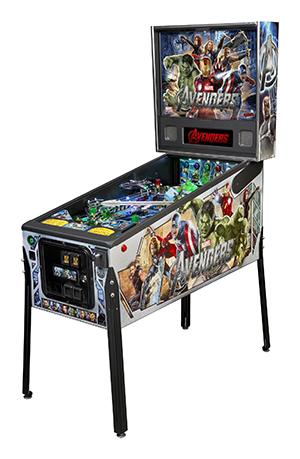Pinball’s popularity may have diminished over the years, but a core group of game enthusiasts and dedicated manufacturers is not only keeping it alive but helping it to thrive once more, writes Simon Liddle.

IT goes without saying that one of the most iconic categories of pay-to-play amusement machines is pinball. The game, which traces its roots back to the table games played in Europe in the 18th century, is one of the most recognisable and enduringly popular forms of amusements. Admittedly, it’s popularity has wavered, with the game falling out of favour with the ‘80s video game generation, for example, but it is nonetheless central to the traditions of the business.
There are effectively two markets for pinball – the commercial and the domestic. The latter benefits from a growing demand for both new and classic pinball machines among collectors and enthusiasts. New releases are eagerly anticipated by the writers of dedicated blogs and fanzines and are greeted with a level of scrutiny reserved for no other amusement genre. Designing new pinball games therefore requires manufacturers to deliver games that cater to both the fickle coin-op audience and the knowledgeable, sometimes fanatical pinball collector.
Sales to the commercial coin-op sector have yet to reach the heights of previous years, but the game has demonstrated its resilience in its core markets. In the US, for example, there were around 19,000 pinball machines on location in 2013. In 2010, that figure was 15,000. The popularity of pinball remains steady, if not spectacular these days.
According to Jody Dankberg of US-based Stern Pinball, now the industry’s largest manufacturer of pinball games, the international business for traditional coin-op machines has been “consistent,” while there has been a notable increase in demand in the collector markets outside of North America.
Stern traces its lineage back to the early ‘30s and what Dankberg describes as the “founding of modern pinball.” Sam Stern, father of founder, chairman and CEO Gary Stern, was part owner and president of pinball pioneer Williams Electronics. Williams, along with other innovative companies such as Bally and Gottlieb, formed the foundation upon which the coin-op pinball industry was built.
Commenting on its enduring appeal, Dankberg said: “Pinball is cool, it’s hard to argue with that. “Availability of games to play has gone up and down over the years, so it is hard to get into pinball if there are none to play.” In the past three years, however, the company has seen a “drastic spike” in location play that is continuing today, he said.
Read the full article in the August issue of InterGame

